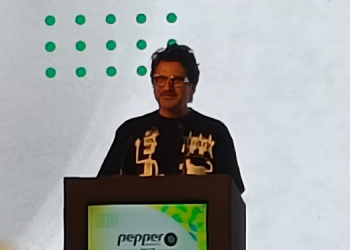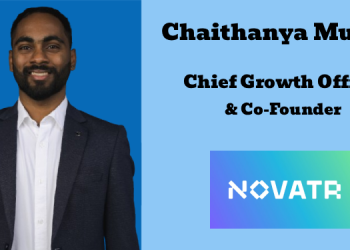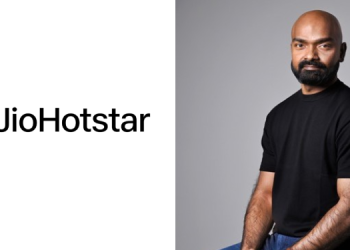Ad tech company VDO.AI recently conducted a study to assess the impact of interactive OLV ads. In comparison to traditional OLV formats, the study unveiled an impressive 377% surge in click-through rates (CTR) for interactive OLV ads. With a focus on key demographics and premium website publishers, the campaign garnered an average of 1,000,000 impressions.
The study was strategically launched across five major metropolitan areas, including Delhi, Mumbai, Chennai, Kolkata, and Bengaluru. While conventional OLV ads offer basic functions like play, pause, and rewind, they often lack the rich interactive elements required to fully engage audiences.
Medianews4u.com caught up with Arjit Sachdeva, CTO, VDO.AI. to find out about the company
What tools does VDO.AI use to help web publishers boost monetisation?
VDO.AI equips web publishers with an array of powerful tools through its Premier Publisher Suite to enhance monetization strategies. The suite includes a robust Bidding Engine, optimizing bids and ensuring brand safety while streamlining operational workflows. Additionally, VDO.AI’s Content Management System (CMS) simplifies content handling, facilitates targeted advertising, boosts engagement, and scales digital experiences seamlessly. The Contextual Engine aligns ads with website content contextually, ensuring brand safety, optimizing ad visibility, and prioritizing user satisfaction for enhanced publisher credibility.
Complementing these tools is VDO.AI’s Content Delivery Network (CDN), ensuring faster load times, bandwidth efficiency, enhanced user experiences, and scalable content delivery to meet evolving demands without compromising performance. Together, these tools empower web publishers to maximize revenue streams, drive engagement, and uphold brand integrity, positioning them for sustained success in the dynamic digital landscape.
What goals does VDO.AI have for 2024 in terms of scaling the business, client roster growth? What is the gameplan to get there?
VDO.AI has ambitious goals for 2024 aimed at scaling the business and expanding its client roster significantly. Firstly, a key focus is on driving digital transformation by enhancing ad experiences for publishers and brands who may not be fully leveraging new age ad formats, inspired by the success stories such as Uber’s entry into the ad space, leading to substantial revenue streams in the range of $600-$700 billion.
The company’s game plan includes a strategic expansion into the US and APAC markets, bolstered by the opening of our new headquarters in New York and upcoming launch of new products planned for Q3. These products are currently undergoing rigorous A/B testing to ensure optimal performance and relevance in the market.
Along with that, VDO.AI is actively expanding its ad sales operations, with new offices established in Delhi, Mumbai, and Canada. These expansions are strategically aligned with tapping into key market opportunities and fostering strong relationships with clients, driving sustainable growth and market leadership in the digital advertising space.
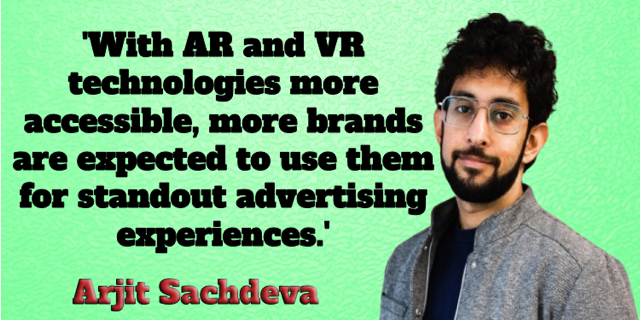
Apart from India which are the other key markets for VDO.AI? Where is the whitespace for rapid growth?
VDO.AI has strategically expanded into global markets to leverage increasing internet penetration and the surging demand for digital advertising solutions. While India remains pivotal, we actively pursue growth in other regions.
Our primary targets are the United States and Canada, where the US alone boasts 323.56 million active internet users, presenting a tremendous opportunity for us. Establishing our new headquarters in New York reflects our positive outlook and commitment to these markets.
However, we don’t limit ourselves; we are also making significant strides in Vietnam, Thailand, Germany, New Zealand, the UAE and more, seizing opportunities in their evolving publisher needs and advertising landscapes.
Could you shed light on the advances are taking place in the world of AI that are helping advance the video ad world?
The world of video advertising is undergoing a fascinating transformation fueled by artificial intelligence. One of the most notable advances is hyper-personalisation; with the power of AI, you can analyze user data to personalise video ads in real-time. For example, one of our ad experiences at VDO.AI leverages AI to personalise content based on users’ location and time. Not only this, but there is also the possibility of changing messaging as per real-time events, such as cricket matches or stock market trends. As per a study, personalisation can boost conversion rates by up to 500%, leading to better ROI and significantly more engaged users.
Another major shift is how we can build interactivity using AI. Platforms no longer need to restrict themselves to running standard video ads; they can offer interactivity, which completely changes the game. In one of our properties, users can actually engage with the products shown in the video ads. We’ve seen a 377% higher CTR with interactive video ads compared to standard video ads
The integration of AI into video advertising has significantly benefited brands by streamlining the production and distribution of video ads, accelerating these processes to unprecedented speeds. AI not only provides precise analytics that help measure brand impact but also autonomously optimizes ad campaigns in real-time without human intervention. This technological advancement not only conserves advertising budgets but also enhances the relevance of ads by targeting audiences more likely to engage, all thanks to AI.
Next year Meta is expected to make more ad revenue than global linear TV networks. Is this a sign that ad budgets are shifting away from traditional media towards digital in a tectonic manner?
The evolving habits of consumers, who are now spending more time online, especially on mobile devices, underscore a pivotal shift in where advertising dollars are allocated. This trend is highlighted in the recent VDO.AI Q2 digital advertising report, which notes that advertising budgets are increasingly following user trends. Meta, with its vast platform reach, exemplifies this shift as it is projected to surpass global linear TV networks in ad revenue next year.
This shift is significant, indicating that advertisers are gravitating towards digital platforms which offer superior content consumption, tracking, and analytical capabilities, benefiting both consumers and advertisers by providing more targeted and efficient advertising solutions.
Meanwhile, traditional linear TV is experiencing a decline, with its consumption projected to decrease by 1.9% in 2024. This downward trend is also evident in advertising investments, with only 18% of marketers planning to increase their spending on linear TV, while a notable 39% intend to cut their expenditures. In contrast, Connected TV (CTV) is emerging as a formidable competitor, capturing significant attention from the industry.
Our latest CTV report highlights how CTV is surpassing linear TV. The adoption of advanced AI tools is further catalyzing this shift towards digital platforms, enhancing the precision and efficiency of advertising campaigns.
Overall, the data reveals a significant transition in media consumption and advertising expenditure towards digital platforms, driven by their ability to offer targeted advertising, measurable outcomes, and extensive global reach. This shift represents not merely a temporary change but a fundamental realignment within the advertising landscape, mirroring the evolving preferences of consumers and the ongoing technological advancements in digital advertising.
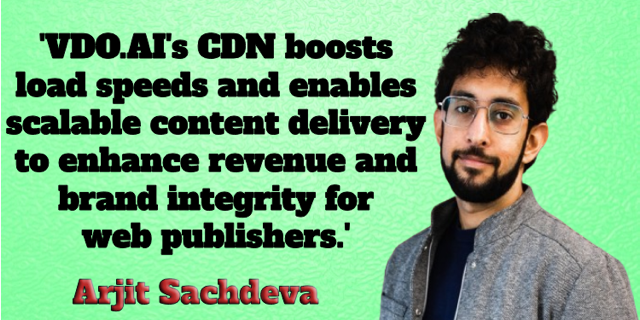
What trends do you expect to see in video advertising in 2024?
Looking ahead to 2024, video advertising is expected to evolve significantly with a strong emphasis on enhanced AI personalisation, interactive and shoppable videos, and cross-platform strategies. Advertisers are likely to leverage advanced AI and machine learning to dynamically personalize video content based on individual viewer data, increasing engagement and ad effectiveness.
Interactive elements such as clickable links and embedded shopping features will become more common, turning ads into direct sales opportunities and significantly boosting viewer interaction. Additionally, with growing concerns over privacy, advertisers will innovate in personalizing content at scale using new technologies and data sources that respect user privacy.
This approach includes utilizing aggregated data and contextual targeting to maintain relevance without relying on traditional data collection methods. Overall, these trends signify a move towards more integrated, engaging, and privacy-conscious video advertising across diverse media platforms, ensuring consistent messaging whether audiences are on mobile, desktop, or connected TVs.
While the digital era has significantly lowered the barriers to entry it has created clutter. How can brands who use video advertising cut through the clutter and standout?
There are various steps a brand can take to stand out from the clutter. To start with, optimising ad experiences and choosing strategic placements are crucial. This involves not only creating high-quality, relevant content but also analyzing data to determine the best times and platforms for ad placements to maximise visibility.
Contrary to conventional belief, Indians spend 52% of their time on the open internet rather than on social media, which makes choosing the right platform for ads extremely important. We have captured this in depth in our Q2 digital advertising report. Secondly, integrating interactive elements into ads can significantly boost engagement.
By transforming viewers from passive observers into active participants through features like polls and clickable products, brands can make their ads more memorable and increase conversion rates. Lastly, embracing cross-platform integration ensures that a consistent brand message reaches the audience, keeping them continuously engaged in your marketing funnel.
At VDO.AI, we enable brands to advertise to their audience across multiple touchpoints in a personalised manner—from CTV to phone, to desktop, to tablet across all platforms. This omnichannel approach helps reinforce the advertising message through repeated exposure in various contexts, enhancing brand recognition.,
As we enter a cookieless world how is VDO.AI adapting for the new scenario?
As we move into a cookieless world, VDO.AI is adapting with innovative strategies to ensure our advertising remains effective and respectful of user privacy. We’re increasingly focusing on first-party data that allows us to deliver highly relevant ads tailored to individual preferences. Alongside this, we’ve incorporated recent developments to our contextual advertising technology to align ads more closely with the content users are engaging with at the moment—ensuring relevance without relying on personal data.
We’re also leveraging third-party marketplaces and unified IDs to identify users across different platforms in a privacy-compliant way. This helps maintain continuity in our ad delivery, regardless of the platform or device being used. Our strategies extend to cross-channel and cross-device approaches, aiming for seamless integration of messaging across smartphones, tablets, connected TVs, and more.
Moreover, we’re refining our targeting techniques, focusing on affinity-based advertising and household income data to better understand and predict purchasing behaviors. Additionally, IP-based targeting allows us to serve geo-specific ads effectively. These strategies collectively help us navigate the cookieless landscape while continuing to deliver targeted advertising solutions that meet regulatory standards and enhance user engagement.
Is experimentation being done by video advertisers to use AR and VR to create immersive experiences for consumers? Any examples that standout for you?
Yes, there’s quite a bit of experimentation happening in the video advertising space with augmented reality (AR) and virtual reality (VR) to create immersive experiences for consumers but it’s still in its very initial stage in India. These technologies are opening new avenues for brands to engage with audiences in more interactive and memorable ways.
One standout example is the innovative use of VR in advertising comes from Oreo. They launched a VR campaign that transported users to a fantastical world inspired by their cookie. As users navigated this world, they could interact with cookies and cream-themed elements, turning a traditional product advertisement into an engaging virtual adventure.
These examples showcase how AR and VR can be used not just for engagement but also to add value to the consumer’s decision-making process, making these technologies incredibly powerful tools for advertisers. As AR and VR technologies become more accessible, we expect to see more brands adopting these methods to create standout advertising experiences.
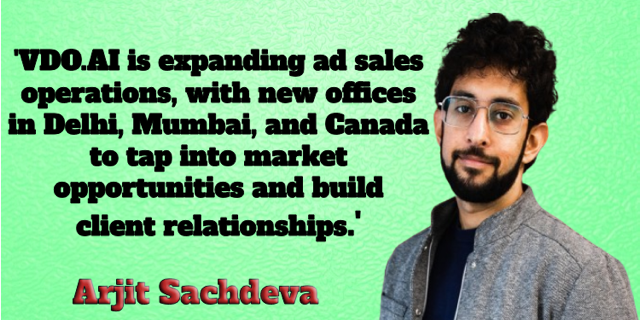
While CTV is at an early stage in India how do you see it growing? In the US it is already big.
Connected TV (CTV) is still emerging in India, but its potential mirrors the success seen in the US. The expansion of broadband and faster internet is facilitating broader CTV adoption as more households access streaming services and smart TVs. The Indian audience’s demand for diverse media content, including regional programming, further boosts this growth.
From a marketing perspective, CTV offers targetted capabilities that attract advertisers and presents a huge opportunity, our recent report on CTV captures this in detail.. Unlike traditional TV, CTV allows for precise audience segmentation and personalized ads, essential for brands aiming to enhance campaign impact. As Indian advertisers become more data-driven, the appeal of CTV’s targeted advertising is expected to grow, speeding up its adoption.
At VDO.AI, innovation drives our CTV advertising growth. We’ve introduced several innovative ad formats, such as the Map Locator and Carousel Gallery, which foster interactive brand-consumer engagement.
For instance, a recent campaign with an automotive brand leveraged these formats to showcase car features, achieving a 50% higher engagement rate than the industry standard and surpassing average video completion rates. Additionally, our Dynamic AI harnesses IP-enabled data—like location and demographics—for targeted, effective activations. This combination of innovation and targeted strategy is positioning CTV as a powerful platform in India’s digital landscape.
What do you think X as an ad platform under a new owner? Will it continue to struggle?
As X transitions under new ownership, its future as an ad platform holds potential for significant revitalisation. The success of these changes depends heavily on the new owner’s vision and strategic approach to digital advertising. If they prioritise enhancing user engagement, improving ad targeting technologies, and creating a more advertiser-friendly environment, X could see a turnaround. However, if existing challenges like data privacy concerns and user retention aren’t adequately addressed, X may continue to struggle.
The digital ad space is competitive, and the effectiveness of X’s response to these challenges will be crucial in determining its future success. The next moves by the new leadership will be key, and the advertising community will be watching closely.


